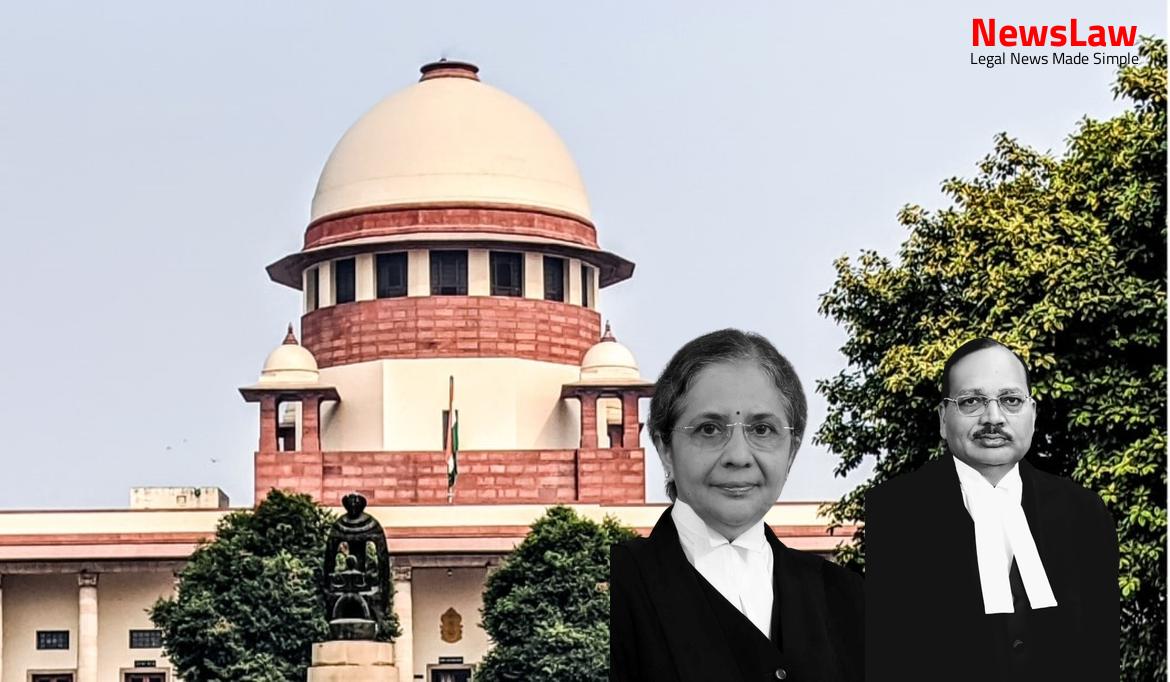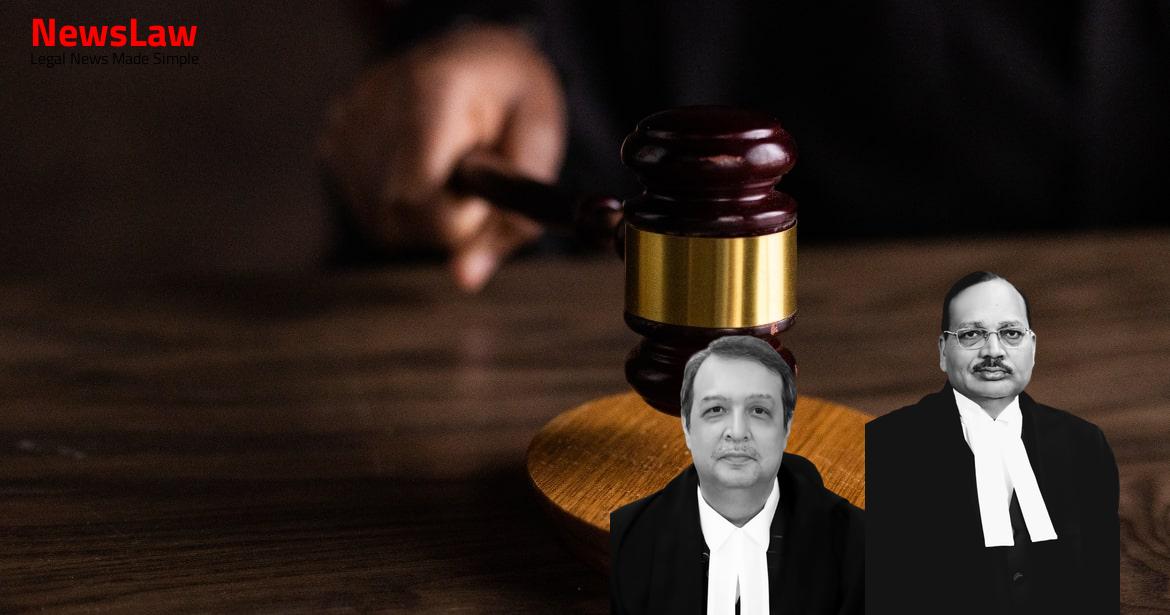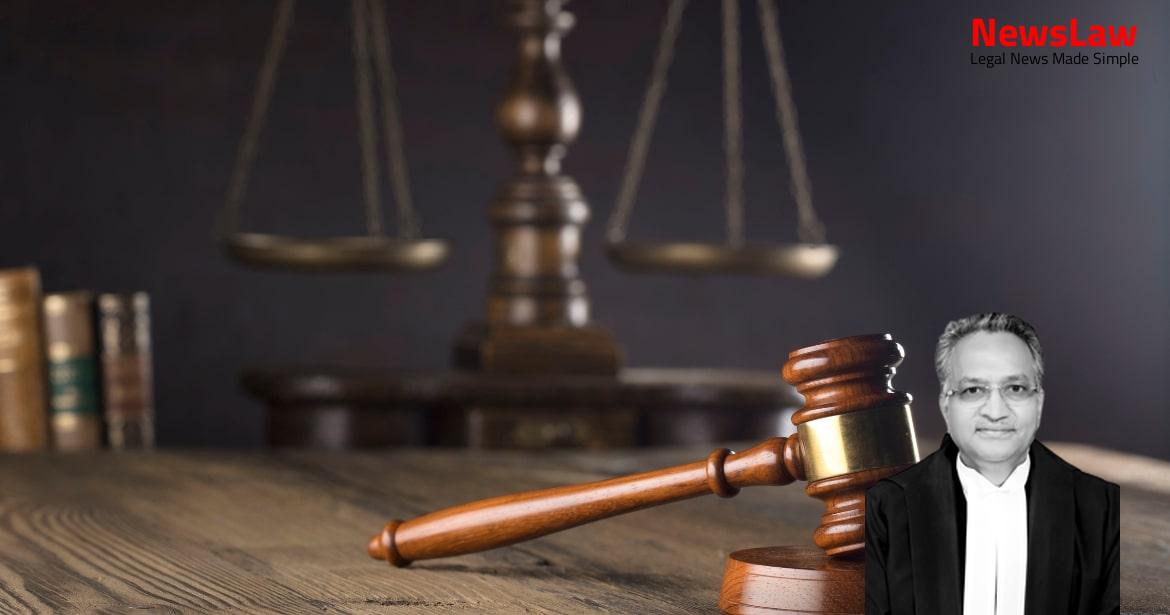In a significant legal battle over a land dispute, the Supreme Court of India has rendered a verdict regarding civil court jurisdiction. The case revolves around a hotel owner in Madurai and a neighboring landowner, seeking resolution for damages incurred during construction activities. Find out how the Supreme Court’s decision sheds light on the interplay between statutory remedies and civil court jurisdiction.
Facts
- The Appellant runs a hotel in Madurai and purchased a plot of land adjacent to his father’s plot in 2014.
- Allegedly, the Appellant’s construction materials were damaged by Respondent No 1 and his henchmen causing a loss of Rs. 2.27 lakhs.
- Despite an order for maintaining status quo, Respondent No 1 completed his construction.
- A suit for damages (O.S. No 186 of 2016) was filed by the Appellant and was decreed in his favor by the Trial Court.
- Damages amounting to Rs. 18,28,941/- with 9% interest p.a. were awarded to the Appellant, along with costs.
- The Appellant’s father also filed a suit (O.S. No. 783 of 2014) against Respondent No 1 for an injunction due to obstruction caused by construction.
- High Court found no express bar on civil jurisdiction in the Act.
- The decree was set aside solely based on the finding that the suit was not maintainable.
- The High Court framed points for consideration regarding the maintainability of the suit, non-joinder of necessary parties, and accrual of the cause of action.
Also Read: Tower Infotech Ltd. Bail Order Appeal
Arguments
- Learned Senior Counsel argued that Section 7(4) of the Act recognizes the possibility of a civil suit being filed, implying the jurisdiction of the civil court to award compensation.
- He highlighted that Section 7(5) closely resembles Section 357 of the Cr.P.C., which allows for the filing of a subsequent civil suit for compensation.
- The Appellant contended that despite the Act specifying a method for claiming compensation for property damage, the jurisdiction of the civil court was not expressly barred.
- It was argued that the Act indicates concurrent jurisdiction of the civil court with the remedies provided under the Act.
- The Respondents argue that the Act and Rules constitute a self-contained code and oust the jurisdiction of the civil court by necessary implication.
- They point to the specific authority created by the Rules for the determination and payment of compensation.
- Citing the decision in Dhulabhai v. State of Madhya Pradesh, they emphasize that when there is an adequate remedy provided in a statute, the jurisdiction of the civil court is to be excluded.
- The Respondents contend that the scheme of the Act and Rules would be redundant if civil court jurisdiction to award compensation is recognized.
Also Read: Priority of Employees’ Dues in Asset Sale: SARFAESI Act vs. Land Revenue Code
Analysis
- Rule 3 of the Act deals only with compensation for public property.
- The Act does not oust the jurisdiction of the civil court unless specific conditions are met.
- Rules 5 to 10 outline the procedure of inquiry.
- Section 14 allows approaching the civil court for relief in addition to the Act.
- The Act does not provide clear guidelines for claiming damages for private property.
- The Act and Rules do not entirely substitute the remedies available in civil courts.
- Assessment of compensation is final for public property, but ambiguous for private property.
- Compensation under the Act is an additional remedy, not excluding civil suits.
- The Act recognizes concurrent jurisdiction of civil courts for claims of damages.
- The Rules lack clarity in addressing claims and assessment of damages for non-public property.
- Expert evidence may lead to directing complainants to the civil court for relief.
- Consumer fora have the jurisdiction to deal with complaints regarding deficiency in service due to medical negligence.
- The Consumer Protection Act, 1986 supplements and does not supplant the jurisdiction of civil courts or other statutory authorities.
- The remedies provided under the Consumer Protection Act, 1986 are not in derogation of those provided under other laws.
- The provisions of Section 3 of the Consumer Protection Act, 1986 preserve the right of the consumer to approach the civil court for necessary relief.
- Remedies available to flat allottees under various statutes are concurrent, including the Consumer Protection Act, RERA, and the Insolvency and Bankruptcy Code.
- A complainant may choose to file a suit in an appropriate civil court or take recourse to other remedies if they believe it will provide a better and effective remedy.
- The civil courts’ jurisdiction is excluded when the statute gives finality to the orders of special Tribunals, except in cases where the particular act’s provisions have not been complied with or the Tribunal has not acted in conformity with fundamental principles of judicial procedure.
- Section 7 of the Act allows for the imposition of fines to be applied towards compensation for loss or injury caused by the offence.
- Sub-section (5) allows for the imposition of separate compensation to be paid to the aggrieved party in cases of imprisonment without a fine.
- Offences under the Act must be tried by a Chief Metropolitan Magistrate or a Sessions Court.
- Orders for compensation under Section 7 can be made by an Appellate Court, High Court, or the prescribed authority.
- Factors to be considered for determining compensation are provided in sub-section (2) of Section 7.
- The prescribed authority must follow a specific procedure while deciding on the application for compensation.
- The definition of ‘property’ is provided in sub-section (4) of Section 2.
- Sections 3, 4, and 5 outline punishable offences, while Section 6 covers bail provisions.
- Section 14 clarifies that the Act is in addition to existing laws and does not exempt individuals from legal proceedings.
- Claims for compensation can be made by affected persons or specified officers as per Section 10(1).
- The Act does not prevent a claim for damages under common law in a civil court.
- The Act does not exclude the jurisdiction of civil courts, either explicitly or implicitly.
- The High Court made an error in ruling that the suit filed by the Appellant was not maintainable.
Also Read: Landmark Judgement on Consumer Rights in Healthcare Sector
Decision
- Suit is maintainable and remitted to the High Court for hearing the first appeal on merits.
- Matter remitted to the High Court for deciding the first appeal being A.S. (MD) No. 143 of 2018 on merits.
- Appeal is allowed, and judgment of the High Court is set aside.
- Trial Court decreed the suit on merits after holding it maintainable.
- High Court appeal under Section 96 of CPC decided only on the preliminary point of suit’s maintainability.
Case Title: M. HARIHARASUDHAN Vs. R. KARMEGAM
Case Number: C.A. No.-008069-008069 / 2019



